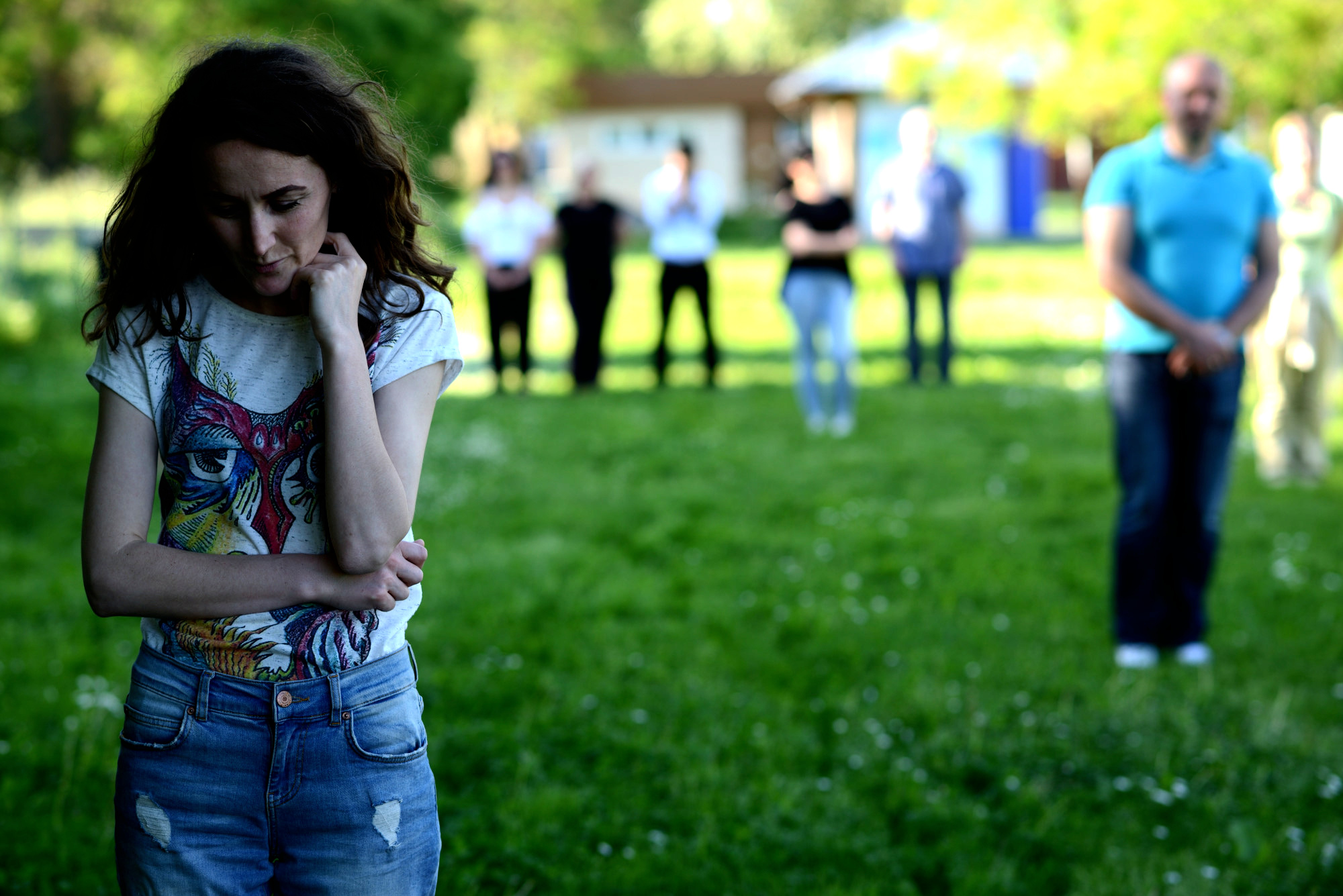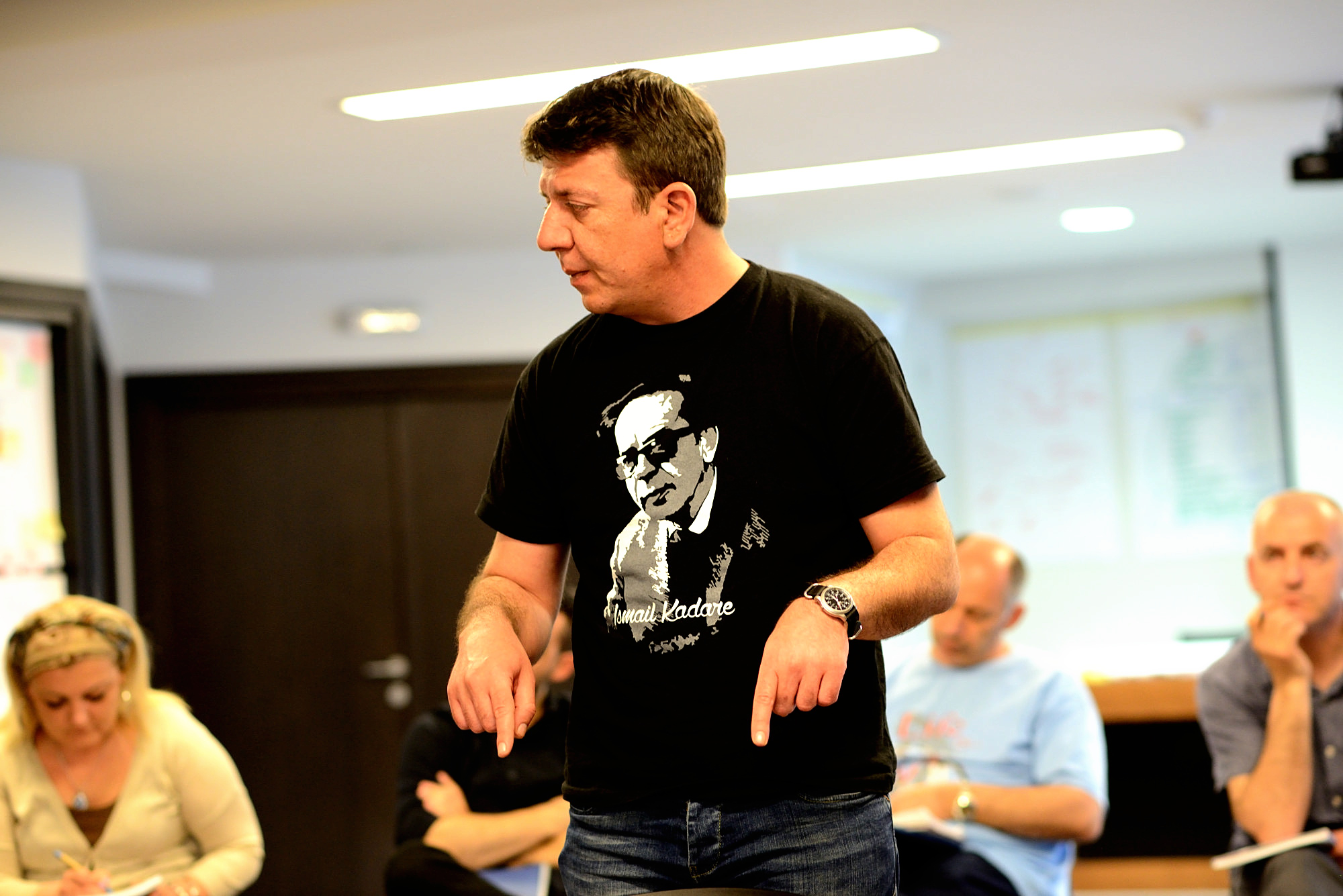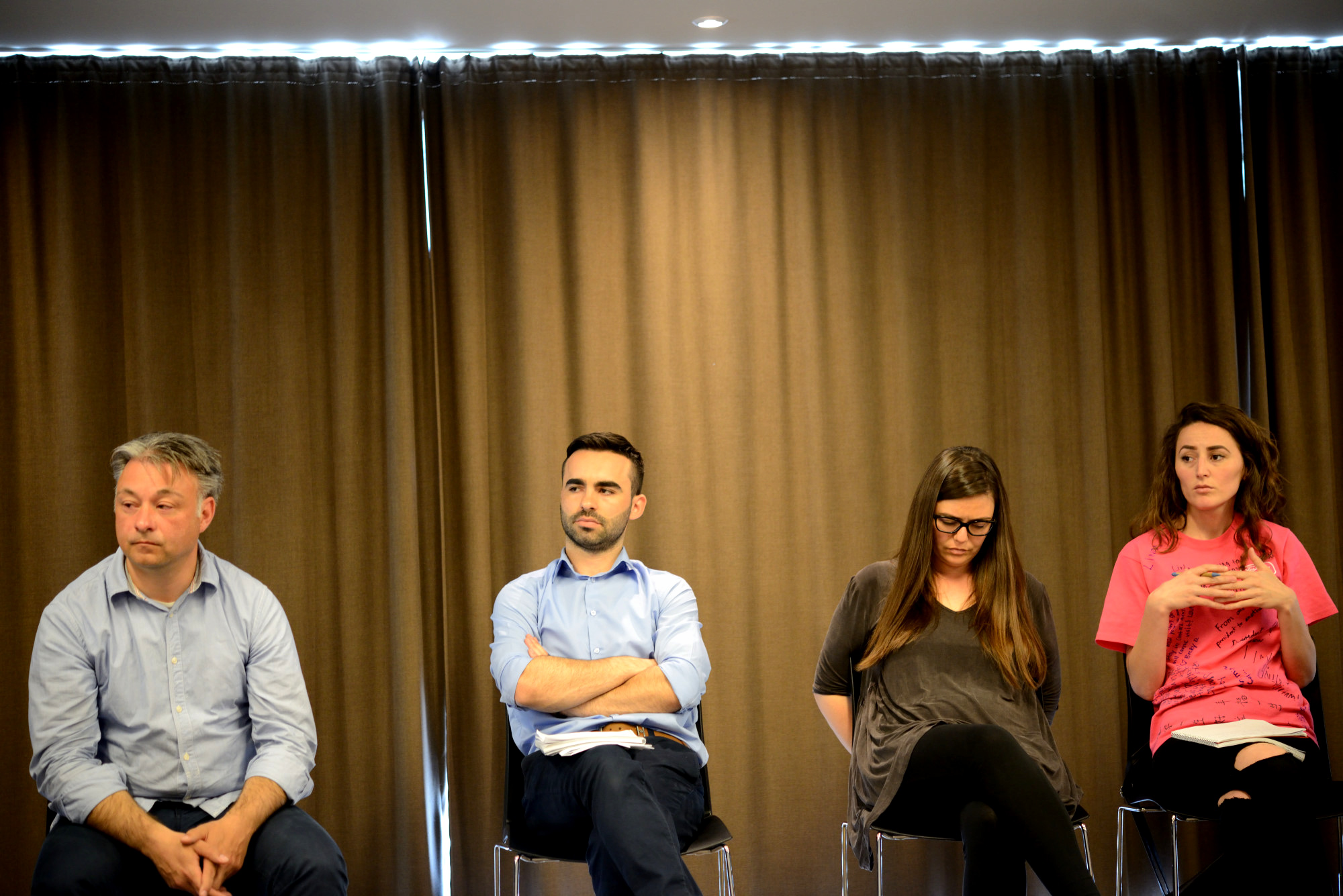What is Mir-Paqe-Мир?
Mir-Paqe-Мир “Introduction to Peacebuilding” is a three-lingual peacebuilding training for participants from Serbia, Kosovo and Macedonia. It took place in Dojran, Macedonia in the period from April 20th to 29th. It’s program was designed and facilitated by the training team which consisted of Nedžad Horozović from CNA Sarajevo-Beograd, Nexhat Ismaili from ANP Gjilan-Prishtina, Boro Kitanoski and Albulena Karaga from Peace Action Prilep-Tetovo.
The group of participants consisted of 17 women and men of different ages and profiles (social worker, psychologist, civic activists, members of political parties, politicians, students, teachers and journalists) from Niš, Belgrade, Kragujevac, Srpska Crnja, Prishtina, Mitrovica, Lešak, Shtime, Lipjan, Prilep, Kumanovo, Kriva Palanka, Delchevo and Gevgelija. Out of the 95 applications that we received (most of which were from Kosovo), 18 people were selected. Unfortunately, one person, who had confirmed his presence, did not show up, without notification. Therefore, we were unable to invite someone else from the waiting list.
Meeting points and spaces for exchange on these particular topics, for people from these contexts, are becoming more and more rare, not only, but also due to the language barriers. That was one of the reasons, why four years ago, at CNA Trainin for Trainers session, the idea of organizing such a training was born. This was the fourth one in a raw. The process of conducting sessions with consecutive translation (in either Serbian-Albanian or Macedonian-Albanian and vice versa) requires concentration and patience. Overall, though, this process was smooth and it could not have been possible without the dedicated work of our translators Naile Keçmezi and Luljeta Ademi which, as one participant put it “made sure that we are not lost in translation”.
What was special this year?
Every training is special. And no, it’s not merely a cliché. It is indeed tailor-made for the needs of the specific group and the specific context(s) of the time. The training team attempted to detect and to address these needs via the program design. What was very particular during this training, is that for many in the training team and in the group it was the first time to work with a blind person. It was an extraordinarily enriching and learning experience for all. The person was fully engaged and participated in almost all games and exercises either as a participant or as a monitor. Some of her insights, the way she reached them and her ability to articulate them clearly in evaluations was an added value for the entire program.
How did the training look like?
The start of the training was unusual compared to other similar trainings. Instead of starting in the work premises, due to technical issues with the hotel, the introductory session was done in an apartment’s room. The space was so small there was barely room to form a circle with the chairs. We did manage though! It was tight and a bit more “intimate” than planned but the participant’s didn’t seem to mind. On the contrary, they were very supportive. One of them stated that he thought the room was chosen on purpose. The afternoon session of that day took place in the working room, in which we, as a group, could start establishing a working routine. For this type of trainings, as for peacebuilding work in general, both “what?” and “how?” things are done is important.

The methodology used in the training enabled that several processes happen simultaneously. The first part of the training was dedicated to getting to know oneself, each-other and the contexts/societies we live in, better. Through plenary discussions, brainstorming sessions, individual work and work in groups, as well as different experiential exercises, the participants had the opportunity to reflect upon their own behavior and attitudes (as well as that of others) in different situations, which could be then related to and serve as illustration and means for analysis of larger group dynamics, group relations and patterns (of structures and/or behavior) on a societal level. The group was very active, curious and engaged. They allowed themselves “to dive” into the exercises which provided precious food for thought and elements for analysis from which we could all learn a lot.
Content wise, this part of the training was focused on reflecting upon ways of communication; team work; identification of different forms (both visible and invisible) of violence, discrimination and injustices in our societies; understanding of conflict dynamics as well as ways of behavior in conflict(s). Throughout the work time was dedicated to getting to know better the different contexts (Kosovo, Macedonia and Serbia): what is similar and what is different about them, how are they related?
The use of three languages enabled a deeper reflection upon what is needed for better understanding and communication among and between different people/groups/communities. The training process itself was good illustration that the ability to speak in the same language is not a guarantee for dialogue, and that dialogue can be established and nurtured if there is will for such a thing despite language barriers.
This laid the foundation for the second part of the training in which we reflected upon the role of gender in society,identities, national and ethnic identities, dealing with the past.This process wasn’t an easy one. Conflicting national dominant collective narratives about the wars were presented and discussed in a very emotionally heated manner. Due to this, content wise, we as a group did not manage to go a step beyond, to critically review parts of those narratives that usually serve as the basis for justification of wars. In following sessions, space was created to contemplate upon the importance of means that one chooses when fighting injustice and responsibility about the injustices done “in the name of our people”. On a plenary settings people shared each one for themselves- what hurts me, what bothers me, and what do I miss in the stories about the war? The list(s) were long…and were filled with the need for acknowledgment of pain, the need for justice for all victims, the pain and bother for the way in which victims are misused in nationalistic discourses, need for a more constructive and dignified process of dealing with the past, the need for more for more stories, more perspectives in the public discourse, more support for people who have the courage to stand against diving discourses, need for readiness for reconciliation and peace.
A session on peacebuilding, followed, in which the participants could reflect upon peace as much more than merely the absence of war. Through brainstorming together in groups about- what indicates that we do not live in peace?- some participants came to the realization that our societies in certain aspects/in the problems that we face, in essence are very similar. Some struggles are joint struggles and each one of us can reflect about- what can I do in order to change and transform parts of our societies for the better, in settings where I have the power to do so? There are plenty, some bigger and some smaller….and some, yet to be discovered.

From the blog of Ivana Đorđević, one of the training participants:
…What was our aim, we didn’t know exactly. The only thing we knew was that we were working towards something and were going to get there together, wherever it turned out to be. We had a sense that the aim was called MIR/ PAQE/ МИР. Yes, that’s also the official title of the training. But, how would we know we reached the goal, or that we were on the right path. We stopped for longer on some pages, shorter on others. But in any case, more than the allotted time. Not because we were slow, but because we wanted to understand better. After each day of training, we took back to our rooms as many emotions as we had given that day. Measured in honesty, our rooms grew fuller each day. We quickly started bringing emotions out from both the workshop and the rooms. Onto the terrace with a view of Dojransko Lake. Symbolically, the lake is partly in Macedonia and partly in Greece. And it is beautiful. Peaceful and beautiful. There are no marks on it that would indicate any kind of border and disrupt its beauty. There were borders between us participants at the training, though. We had brought them with us, unknowingly. With some they came up earlier, with others later. They would crop up in different forms and at different times. During the training sessions or the coffee breaks. It wouldn’t have been fair if we had locked them up somewhere. It wouldn’t have been real. The reality is that they exist. At the training, we tried to learn how to jump over them, like some easily surmountable obstacle. The reality is that, sometimes, no matter how hard you try, you just can’t get over them. What then? Well, then you imagine you did manage to jump over the obstacle, and you imagine how that would make you feel. And you can’t help smiling. Because it’s so lovely on the other side. So vivid and fresh. The beauty is enough to bring tears to your eyes, and a high five from a friend who also got stuck somewhere near that obstacle. And then it becomes insignificant. It crumbles before you, because you are stronger. You are where you’ve always been, ready to overcome any obstacle put in your way, diminish it and jump over to the side where there is Peace. The Peace that seems so unreachable and elusive. But it’s not. The more you take of it, the more there is. And you have to practice, a little bit every day. As much as you can. And everyone can. And should…
Photos from the training can be viewed here.
